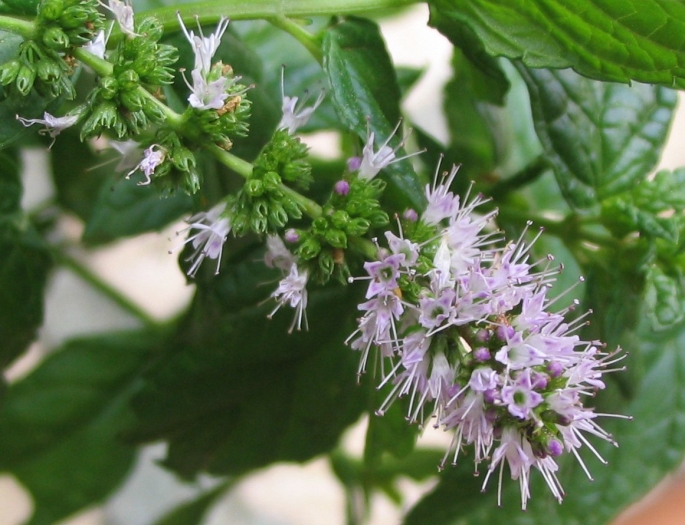Spearmint
(Mentha spicata)
Spearmint (Mentha spicata)
/
/

Miguel303xm
CC BY-SA 2.5
























































Estimated Native Range
Summary
Spearmint is valued for its aromatic leaves, which are used fresh or dried in culinary dishes, beverages, and herbal teas. The essential oil, oil of spearmint, is widely used for flavoring and in aromatherapy. In gardens, it can serve as an attractive ground cover or edging plant, and it’s also suitable for container gardening. Spearmint prefers full sun to part shade, consistent moisture, and well-drained soil. It can be aggressive, spreading via rhizomes, so it may need to be contained or managed to prevent unwanted spread. While generally low-maintenance, it can be susceptible to rust, leaf spot, and mint wilt.CC BY-SA 4.0
Plant Description
- Plant Type: Herb
- Height: 1-2 feet
- Width: 1-2 feet
- Growth Rate: Moderate
- Flower Color: Purple
- Flowering Season: Summer
- Leaf Retention: Deciduous
Growth Requirements
- Sun: Full Sun, Part Shade
- Water: Medium, High
- Drainage: Fast
Common Uses
Bee Garden, Bird Garden, Border Plant, Butterfly Garden, Deer Resistant, Edible*Disclaimer: Easyscape's listed plant edibility is for informational use. Always verify the safety and proper identification of any plant before consumption., Fragrant, Groundcover, Hummingbird Garden, Potted Plant, Rabbit Resistant, Salt Tolerant
Natural Habitat
Native to temperate regions of Europe and Asia, often found in moist habitats such as stream banks and meadows
Other Names
Common Names: Garden Mint, Common Mint, Lamb Mint, Mackerel Mint, Bush Mint, Grøn Mynte, Ähren-Minze, Krauseminze, Grüne Minze, Yerbabuena
Scientific Names: , Mentha spicata, Mentha crispata, Mentha sylvestris subsp. viridis, Mentha viridis var. angustifolia, Mentha longifolia subsp. viridis, Mentha rubicunda,
GBIF Accepted Name: Mentha spicata L.